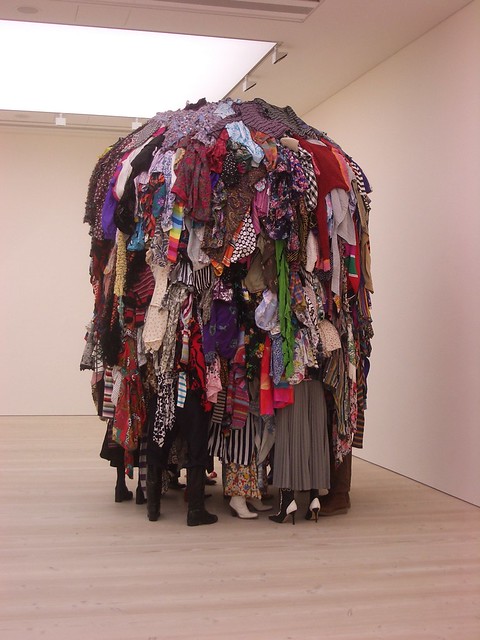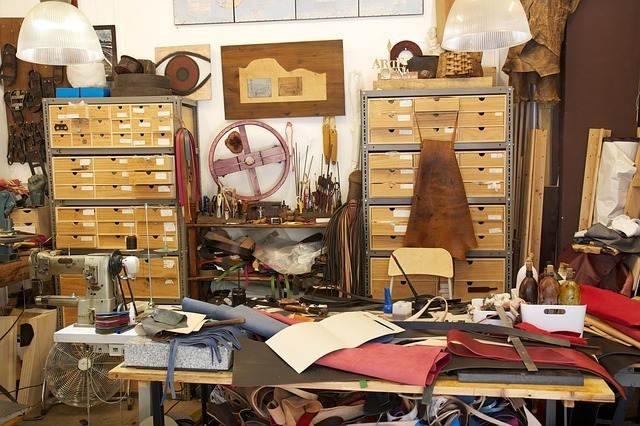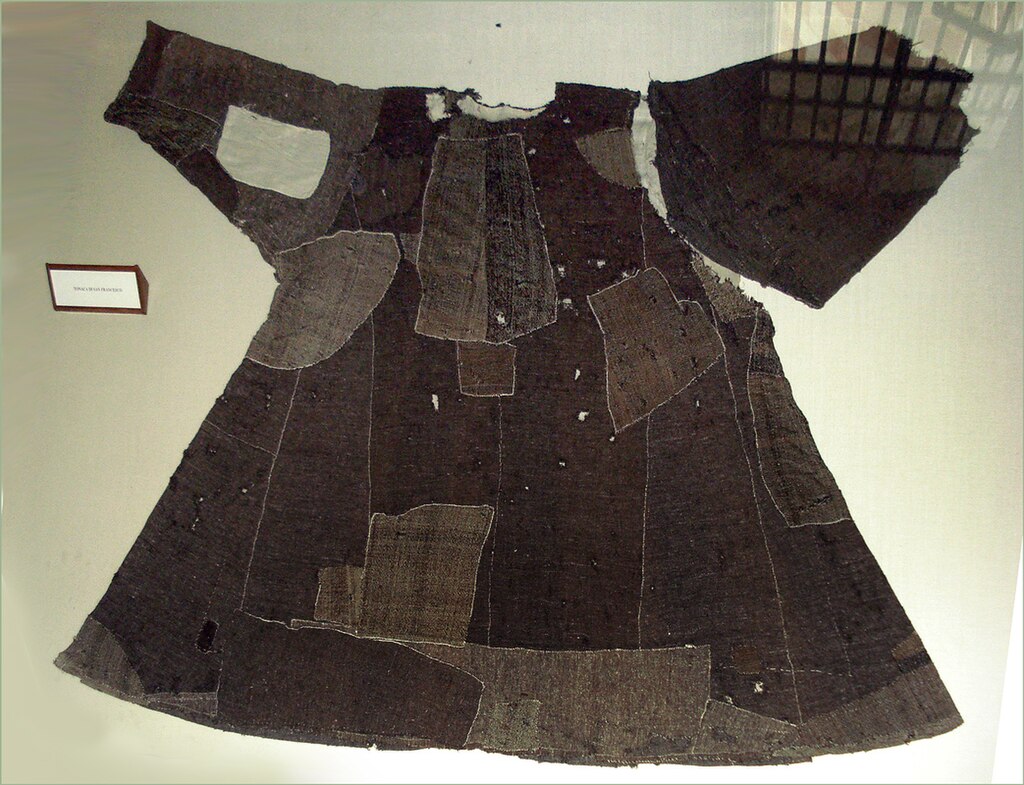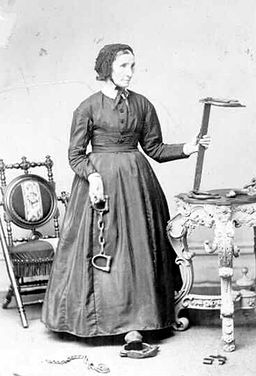
“Giving is often the most efficient use of money. For example, $20 doesn’t even cover a dinner out for our family. If I invest $20 at 12 percent (unlikely in the current economy), in ten years it will be $65.99. If I give it away, that $20 could teach one child to read and write. That child could break out of the cycle of poverty in ten years. Or my $20 could provide chickens to a family. Those chickens could give hundreds or thousands of new chickens or eggs in ten years, saving the lives of children that might have died from starvation or helping a family have enough money from selling the extras to send their kids to school. How does that compare to a plate of pasta or an invested $65 dollars? [sic] It isn’t comparable.”
Lorilee Lippincott, The Simple Living Handbook
Putting It In Its Place
Some of you may be feeling somewhat disheartened by the amount of stuff that stares you in the face on a daily basis and flattens your soul whenever you think about doing a spot of pruning. I know I’ve certainly been there.
The stuff may be inhibiting your movements, as you walk crab-wise around the room to avoid it. It may be eliminating your options, as you can’t use the space it’s taking up. It may even be making you feel guilty for not being in control of it, like a large badly-behaved dog that insists on piddling indoors, in front of your guests.
 Are you going to let a bunch of inanimate objects treat you like that? No, you are not! Today is the day, my friends, when we begin to put that stuff in its place.
Are you going to let a bunch of inanimate objects treat you like that? No, you are not! Today is the day, my friends, when we begin to put that stuff in its place.
That place may be one of five:
here (it does happen),
somewhere else (put it away),
a charity shop,
a recycling bin,
or the famous circular file, aka the rubbish bin.
Ready? Slow and steady wins the race, remember. Every bit is progress.
I decided to adapt FlyLady’s marathon cleaning approach, making it rather less marathon but using her maxim that “you can do anything for fifteen minutes.” Use a timer – it beats looking at a clock, or forgetting to. Let’s begin with fifteen minutes of going through our clothing and biffing out the things we don’t wear. I looked in my wardrobe, chest of drawers, bandanna bowl, coat stand and hallway shelf. I didn’t bother looking through the laundry basket, since by definition it only contains the things I actually wear.
 Since I had a clothing prune in June, there isn’t much deadwood left to be removed. Interesting horticultural note: pruning live wood often results in a more fruitful plant. You don’t have to wait for it to start rotting to whack it off. If it doesn’t fit, doesn’t suit, or you just don’t wear it, move it on! Don’t worry about where it’s going just yet, just haul it out and put it aside.
Since I had a clothing prune in June, there isn’t much deadwood left to be removed. Interesting horticultural note: pruning live wood often results in a more fruitful plant. You don’t have to wait for it to start rotting to whack it off. If it doesn’t fit, doesn’t suit, or you just don’t wear it, move it on! Don’t worry about where it’s going just yet, just haul it out and put it aside.
Set your timer, and off you go! Good hunting!
Despite the recent prune, I managed to bag a couple of elderly undergarments and a rain jacket which does not suit me, does not fit me, and consequently is never worn. Why I had this is anyone’s guess. Total: 3. How did you do?
Set your timer again, and this time focus on your bedside table and/or dressing-table. Accessories, things in pottles or tubes, collections of bedside books you haven’t got around to reading… whatever’s there, interrogate it!
I disinterred an old perfume, a lipstick (the only makeup I own, but I fear it has passed the statute of limitations), an assortment of pins etc for the long hair I haven’t had in years, and a hairbrush (ditto). Also a book of exercises which I don’t do. 5 items; running total 8. And that’s not counting the things which should have been somewhere else, or the random bits of paper for the recycle bin.
How are you feeling? One more, and we’ll stop for a cuppa. This could be a big one, but panic not! Fifteen minutes attacking a big job doesn’t take any longer than fifteen minutes of a small one. We now turn our attention to our hobby stuff – sewing, knitting, stamp-collecting, woodwork; whatever it is, spend fifteen minutes pruning out any unnecessary stuff. (If you have no hobby that involves stuff, you can spend these fifteen minutes doing whatever it is you do in your hobbyless free time, and feeling smug.)
I went through the yarn stash in July (one shopping bag purged full of little remnants and itchy acrylics) so I will be having a go at the sewing stuff this time. Attack!
 In fifteen minutes of quick assessment, I pulled out a variety of cords and beads from the trim box (not sure what they are intended for, so v. unlikely to use them) as well as a couple of buckles and two historical sewing patterns which I’ve had for years and never used. Time for them to move on, I’d say. Also a large number of pieces of unrequired paper and odd bits of fabric. Call it five items; running total 13.
In fifteen minutes of quick assessment, I pulled out a variety of cords and beads from the trim box (not sure what they are intended for, so v. unlikely to use them) as well as a couple of buckles and two historical sewing patterns which I’ve had for years and never used. Time for them to move on, I’d say. Also a large number of pieces of unrequired paper and odd bits of fabric. Call it five items; running total 13.
Now make yourself a nice cup of tea (or beverage of your choice) and congratulate yourself on your achievement thus far. Once you’ve had your cup of tea, you can put the ‘somewhere else’ items back where they belong and sort the remainder into the three outer destinations: charity, bin or recycle. If you fear you will become distracted, set a timer for this too.
Look at the list/number/photo of things you’ve pruned out of your life in less than an hour. Well done! Feel free to leave it at that for now, or to give these areas another pruning during the week, in as many fifteen-minuteses as you like. Let us know how you go, and do join us again next week!
My Simplicity Heroes
I don’t really go in for hero-worship, but there are always going to be those people who make me think “Gosh! What a life! I wish I was a bit more like them…”
 Number one on the simplicity charts is Jesus Christ (also the exception to the hero-worship clause). Jesus had so little that he once pointed out to a would-be follower that he didn’t own so much as a place to lie down. Foxes have dens, birds have nests – but if you’re going to follow me, don’t plan on being as comfy as them. Famously, he was so poor that when he died they had to borrow a tomb to bury him in.
Number one on the simplicity charts is Jesus Christ (also the exception to the hero-worship clause). Jesus had so little that he once pointed out to a would-be follower that he didn’t own so much as a place to lie down. Foxes have dens, birds have nests – but if you’re going to follow me, don’t plan on being as comfy as them. Famously, he was so poor that when he died they had to borrow a tomb to bury him in.
But he wasn’t a grim, joyless race-to-the-bottom kind of person either. He often got criticized by the establishment for going to parties (first miracle: turning about 600L of water into 600L of wine to spare some newlyweds the embarrassment of having under-catered their reception) and he once laid into his followers for lambasting a woman who poured a bottle of expensive perfume all over him. Thrifty it might not have been, but loving it was.
And while he might not have owned much but the clothes on his back, they weren’t the lowest rags available. He wore a seamless robe, which, as any weaver will tell you, is not the easiest thing in the world to make. Like the perfume, it was probably a gift. Medieval art suggests that it was made by Mary, although rather than getting into the technicalities of weaving, they just depicted her knitting in the round (using DPNs, not circulars).
 I learned from his example that why is often at least as important as what; that good things are gifts to be enjoyed, but not expected; and that you should always give your grave back when you’re finished with it.
I learned from his example that why is often at least as important as what; that good things are gifts to be enjoyed, but not expected; and that you should always give your grave back when you’re finished with it.
Fast-forward a millennium or thereabouts and you encounter Francesco Bernadone, better known these days as St. Francis of Assisi. Francis was crazy in love with “Lady Poverty” (his term) and hey, people in love do weird things. Francis took a vow to never refuse to give anything that was asked of him “for the love of God” and his followers had the greatest difficulty in persuading him not to give poor people the clothes off his back.
When he retired from leading the order, the new leadership made him promise not to give his clothes away any more – it looked bad, having your founder running about in his underwear – and Francis obediently promised. So the next time he encountered a beggar wearing less than him, he sorrowfully informed the fellow that he couldn’t give him his clothes – and then suggested the beggar should mug him. Possibly the first recorded instance of legalism being used in a good cause.

I learned from Francis that having little or nothing can be as full a life as having much – or even fuller. As he pointed out, as soon as you start having stuff, you start worrying about people nicking it. No stuff? No worries.
#3 on the list is a group rather than a person: the Quakers, a.k.a. the Society of Friends. (Mostly the historical Quakers. Richard Nixon, not so much.) Unlike #1 and #2, they didn’t generally divest themselves of all possessions, up to or including their clothing. They took a slightly different approach. Instead of reducing themselves to a level of poverty where they were dependent on the kindness of others, they aimed to be the ones whose kindness others could depend on.
In order to be able to be generous, they worked hard and developed businesses along sound ethical lines. Many were wealthy – bankers, manufacturers – but unlike the wealthy of today, they shunned luxury and conspicuous consumption, believing that no one was superior to anyone else and it was shameful to act (or dress) as though you were. Instead, they poured their time and resources into social justice causes, such as the reform of inhumane conditions in prisons and – famously – the abolition of slavery.
 However plain – or rather, Plain Quakers were, they weren’t against the good things of life (apart from being teetotal). They were industry leaders in the chocolate business – need I say more? Plainness was a hallmark of the Quaker, yes, but so was quality. A Quaker would, for example, infinitely prefer to wear the same plain, good quality garment for years, than to have a never-ceasing cycle of cheap fashionable tat filling their wardrobe.
However plain – or rather, Plain Quakers were, they weren’t against the good things of life (apart from being teetotal). They were industry leaders in the chocolate business – need I say more? Plainness was a hallmark of the Quaker, yes, but so was quality. A Quaker would, for example, infinitely prefer to wear the same plain, good quality garment for years, than to have a never-ceasing cycle of cheap fashionable tat filling their wardrobe.
The point for the Quakers was not that it was wrong to spend money, or even to spend money on things for yourself. The point was that it was wrong to spend money on things for yourself that you didn’t need, when others didn’t have the things that they needed.
I learned from the Quakers that #1’s command to “Love others as you love yourself” can be taken as a practical instruction for living; that living simply so that others can simply live really does make a difference; and that being thought odd is no barrier to making change in your world.
History bears witness that their simplicity brought great good to many. I hope that one day that can be said of me.

